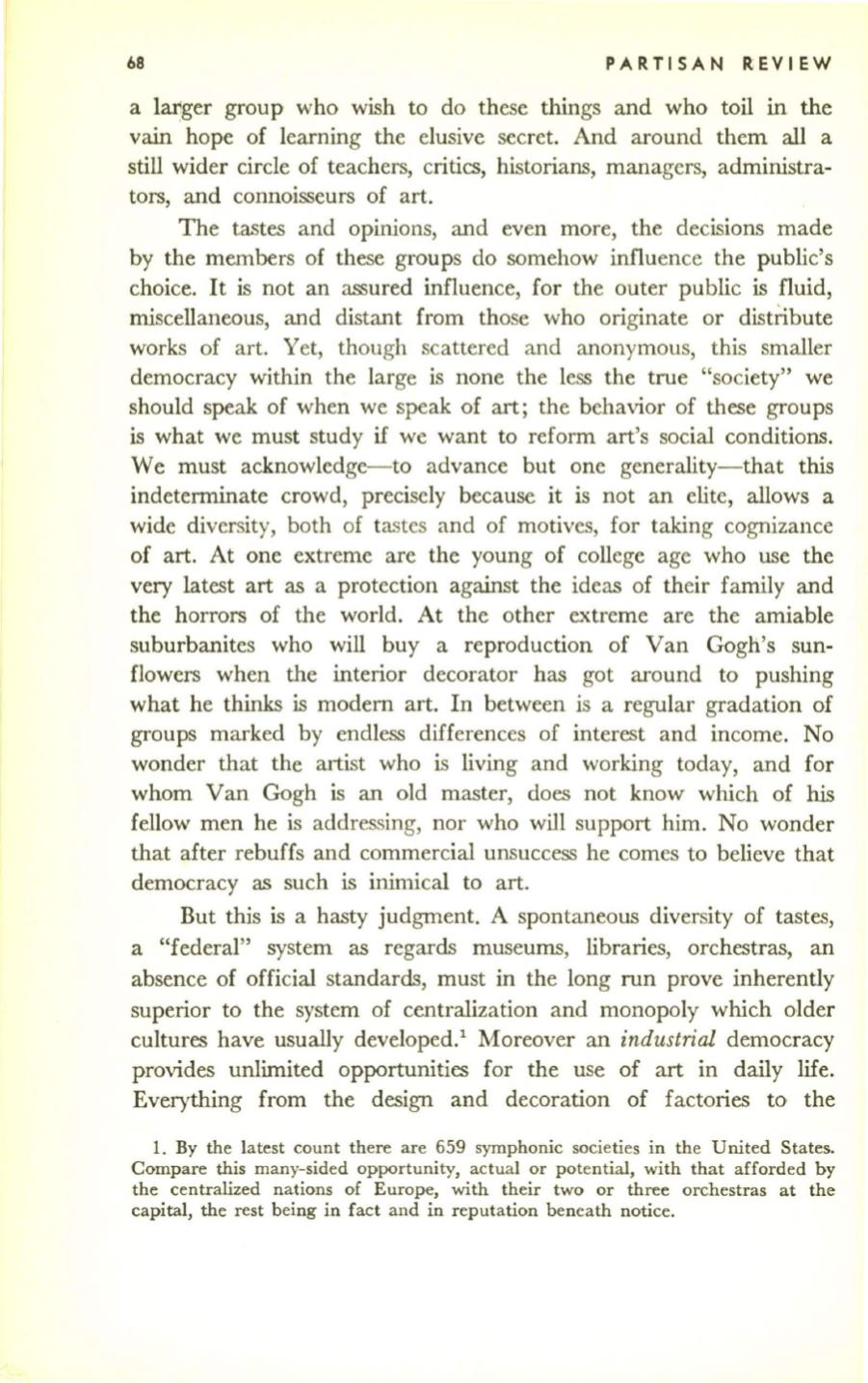
68
PARTISAN REVIEW
a laI1ger group who wish to do these things and who toil
in
the
vain hope of learning the elusive secret. And around them all a
still wider circle of teachers, critics, historians, managers, administra–
tors, and connoisseurs of art.
The tastes and opinions, and even more, the decisions made
by the members of these groups do somehow influence the public's
choice. It is not an assured influence, for the outer public is fluid,
miscellaneous, and distant from those who originate or distnbute
works of art. Yet, though scattered and anonymous, this smaller
democracy within the large is none the less the true "society" we
should speak of when we speak of
art;
the behavior of these groups
is what we must study if we want to reform art's social conditions.
We must acknowledge-to advance but one generality-that this
indeterminate crowd, precisely because it is not an elite, allows a
wide diversity, both of tastes and of motives, for taking cognizance
of art. At one extreme are the young of college age who use the
very latest art as a protection against the ideas of their family and
the horrors of the world. At the other extreme are the amiable
suburbanites who will buy a reproduction of Van Gogh's sun–
flowers when the interior decorator has got around to pushing
what he thinks is modem art. In between is a regular gradation of
groups marked by endless differences of interest and income. No
wonder that the artist who is living and working today, and for
whom Van Gogh is an old master, does not know which of
his
fellow men he is addressing, nor who will support him. No wonder
that after rebuffs and commercial unsuccess he comes to believe that
democracy as such is inimical to art.
But this is a hasty judgment. A spontaneous diversity of tastes,
a "federal" system as regards museums, libraries, orchestras, an
absence of official standards, must in the long run prove inherently
superior to the system of centralization and monopoly which older
cultures have usually developed.
l
Moreover an
industrial
democracy
provides unlimited opportunities for the use of art in daily life.
Everything from the design and decoration of factories to the
1.
By the latest count there are 659 symphonic societies in the United States.
Compare this many-sided opportunity, actual or potential, with that afforded by
the centralized nations of Europe, with their two or three orchestras at the
capital, the rest being in fact and in reputation beneath notice.


